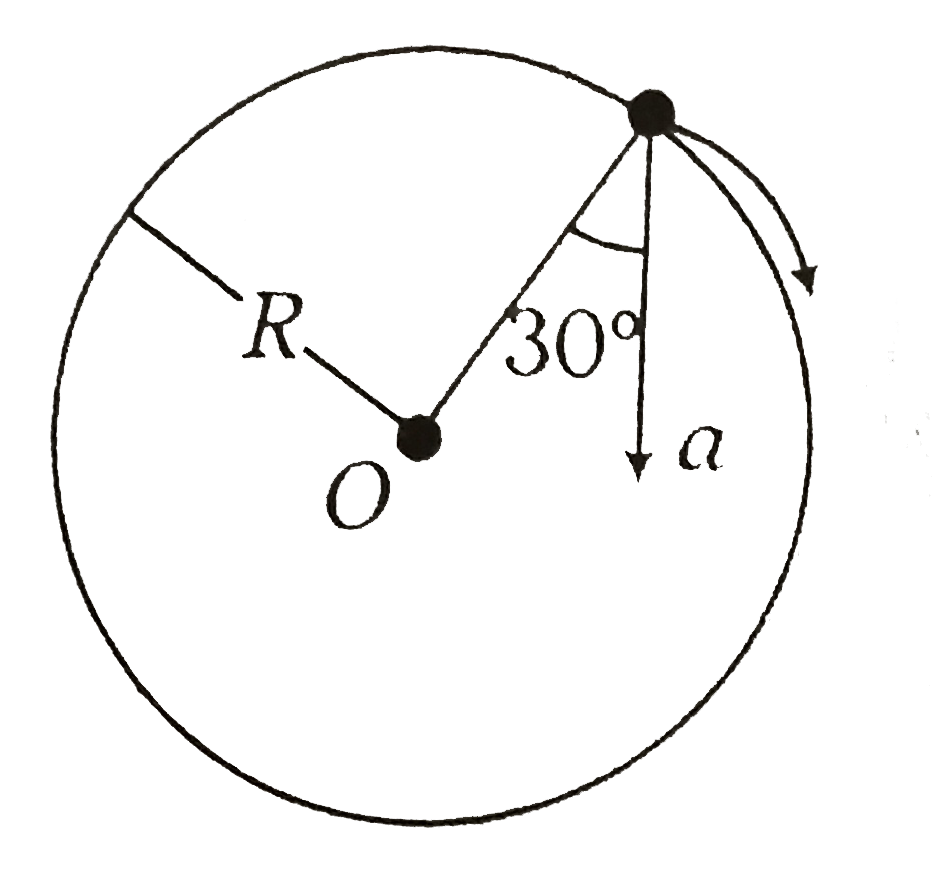Centripetal acceleration of a particle of mass m moving in a circle of radius r is 4/r2. What is the angular momentum of the particle ?
4 m/r
4m/√r
2m√r
2 m/r
The correct Answer is:C
a=4r2=v2r
⇒ v=√4r
L=mvr=m√4r=2m√r
Hence (C) is correct.
Topper's Solved these Questions
- ROTATIONAL MECHANICSBOOK - FIITJEECHAPTER - ROTATIONAL MECHANICSEXERCISE - ASSERTION REASONING TYPE
1 Video
- ROTATIONAL MECHANICSBOOK - FIITJEECHAPTER - ROTATIONAL MECHANICSEXERCISE - COMPREHENSION I
3 Videos
- ROTATIONAL MECHANICSBOOK - FIITJEECHAPTER - ROTATIONAL MECHANICSEXERCISE - SOLVED PROBLEMS (SUBJECTIVE)
10 Videos
- PHYSICS PART2BOOK - FIITJEECHAPTER - PHYSICS PART2EXERCISE - Numerical Based Question Decimal Type
6 Videos
- SEMICONDUCTOR AND DEVICEBOOK - FIITJEECHAPTER - SEMICONDUCTOR AND DEVICEEXERCISE - SOLVED PROBLEMS Objective: Level-I
20 Videos
Similar Questions
Knowledge Check
If KE of the particle of mass m performing UCM in a circle of radius r is E. Find the acceleration of the particle
A2EmrB(2Emr)2C2EmrD4EmrA particle of mass m moves along line PC with velocity v as shown. What is the angular momentum of the particle about P?
 AmvLBmvICmvrDzero
AmvLBmvICmvrDzeroA particle of mass m moves along line PC with velocity v as shown. What is the angular momentum of the particle about O?
 AmvLBmvlCmvrDZero
AmvLBmvlCmvrDZero
A particle of mass m is moving along a circle of radius r with a time period T. Its angular momentum is
View SolutionA particle of mass m moves along line PC with velocity v as shown. What is the angular momentum of the particle about O?

View SolutionA particle of mass 0.2 kg is moving in a circle of radius 1 m with f=(2/π)sec−1, then its angular momentum is :
View SolutionIn the given figure, a=15m/s2 represents the total acceleration of a particle moving in the clockwise dirction in a circle of radius R=2.5m at a given instant of time. The speed of the particle is

View SolutionA particle of mass m describes a circle of radius r with a uniform speed v. The centripetal acceleration of the pariticle is 4r2 .What is the magnitude of the linear momentum of the particle ?
View Solution
